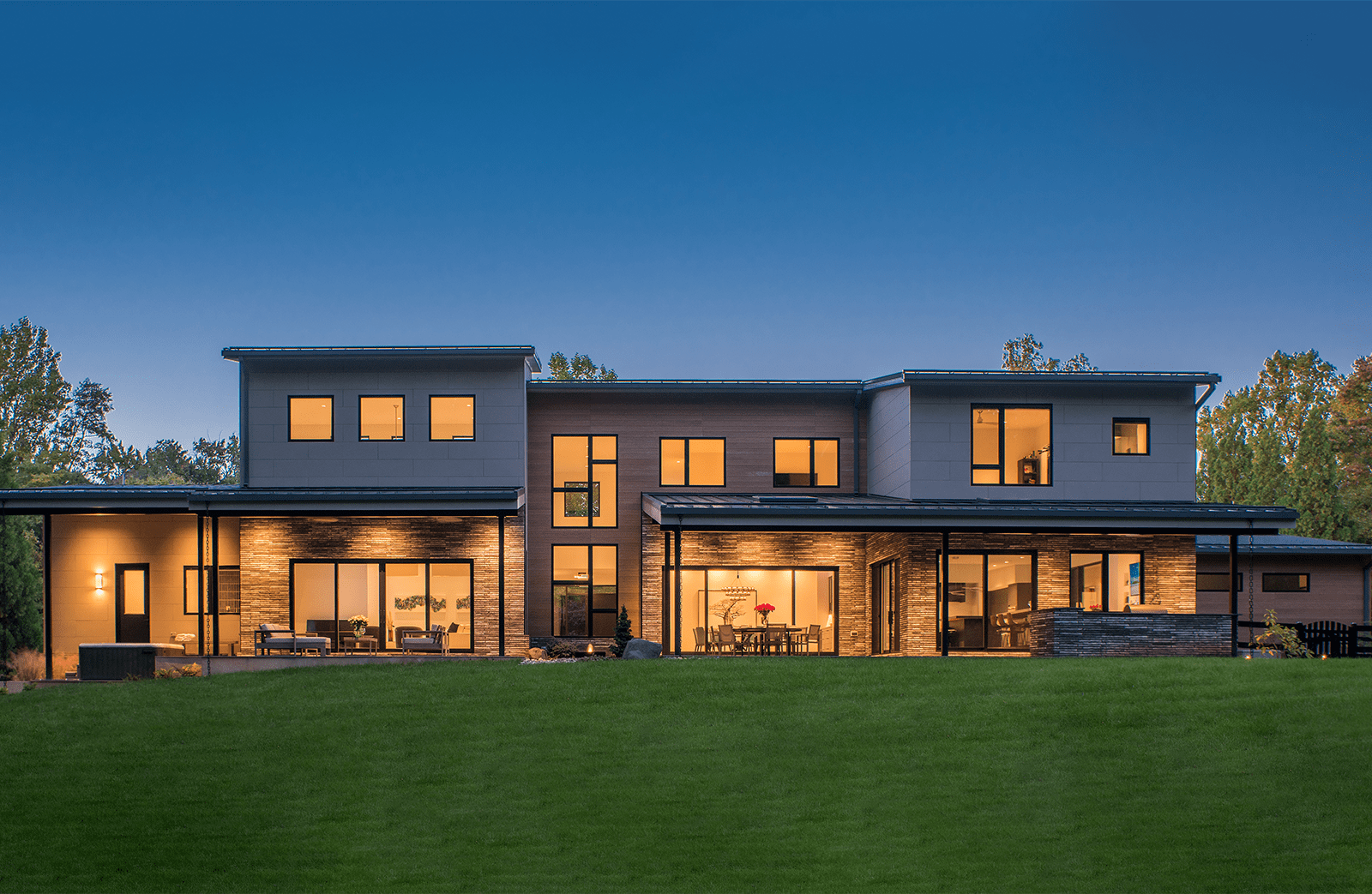
 The Kaufman House, Palm Springs CA, by Richard Neutra; Photo by Dan Solomon
The Kaufman House, Palm Springs CA, by Richard Neutra; Photo by Dan Solomon
Have you ever found yourself scrolling through home design magazines or websites, captivated by the timeless allure of Mid-Century Modern homes? You're not alone. The style, characterized by clean lines, open spaces, and a seamless connection with nature, has a magnetic pull that many find irresistible. Yet, despite its popularity, there's often confusion about what exactly constitutes a Mid-Century Modern design and why it has such enduring appeal.
As a design-build firm specializing in modern homes that prioritize health, wellness, and happiness, we at AV Architects + Builders have a deep appreciation for architectural styles that stand the test of time. Mid-Century Modern design is one such style that has not only influenced the architectural world but also aligns closely with our own design philosophy. We understand the nuances that make this style unique and how to incorporate its principles into modern living spaces.
In this comprehensive article, we'll demystify the world of Mid-Century Modern home design. We'll delve into its historical roots, explore its key characteristics, and discuss why it continues to be a significant influence in modern architecture. Whether you're an avid fan of the style or considering it for your own home, this article will provide you with the insights you need to appreciate and implement Mid-Century Modern design fully.
The term "Mid-Century Modern" has become a buzzword in the world of architecture and interior design. But what exactly does it mean, and why has it stood the test of time? Originating in the post-World War II era, Mid-Century Modern design was the brainchild of architects who embraced new materials and open concepts.
The Genesis of Mid-Century Modern Design
Mid-Century Modern design emerged in the 1940s, 50s, and 60s, a period marked by the post-WW2 baby boom and rapid technological advancements. Architects of this era had access to new materials like steel, concrete, and glass, which allowed for more creative and innovative designs. Before this movement, homes were often more ornate and crafty, but the modern era ushered in a focus on clean lines and minimal decoration.
Before the term "Mid-Century Modern" was coined, the modern movement was already underway, influenced by architects like Frank Lloyd Wright and European visionaries who arrived in the 1930s. They created what was known as the "International Style," a design philosophy that emphasized functionality and rejected unnecessary ornamentation. This laid the groundwork for what would become Mid-Century Modern design.
 AV Architects + Builders, The Architect House, Great Falls, VA; Photo by Maxwell Mackenzie
AV Architects + Builders, The Architect House, Great Falls, VA; Photo by Maxwell Mackenzie
5 Key Characteristics of a Mid-Century Modern Home
1. Clean Lines and Minimal Decoration
One of the defining features of Mid-Century Modern design is its emphasis on clean lines and minimal decoration. This design philosophy is rooted in a desire for simplicity and functionality. The focus is on the essentials, eliminating unnecessary frills and ornamentation that don't serve a practical purpose. This minimalist approach not only creates a visually pleasing aesthetic but also promotes a sense of tranquility and order within the home.
2. Large Windows and Open Spaces
Another hallmark of Mid-Century Modern architecture is the use of large, floor-to-ceiling windows. These expansive windows serve to bring in ample natural light, creating bright and airy interiors. The design also encourages a seamless flow between indoor and outdoor spaces, which was a radical departure from earlier architectural styles that were more closed off from nature. This openness serves to blur the lines between the interior and exterior, making the home feel more expansive and connected to its surroundings.
3. Connection with Nature
The Mid-Century Modern design often features open spaces that flow effortlessly into outdoor areas, creating a strong connection with nature. This was a groundbreaking concept, especially during a time when homes were becoming more inward-focused due to urbanization and technological advancements. The design often incorporates elements like patios, decks, and gardens, making it easier for residents to engage with the natural world. This connection with nature not only enhances the aesthetic appeal of the home but also contributes to the well-being of its inhabitants.
4. Materials
The use of materials like steel, glass, concrete, and wood is another defining characteristic of Mid-Century Modern homes. These materials not only contribute to the aesthetic but also offer new opportunities for architectural experimentation. Often, these materials are used in their raw, unadulterated form, celebrating their natural qualities and textures. This was a revolutionary approach that allowed architects to break free from traditional constraints and explore new forms and structures.
5. Functionality
Functionality is at the heart of Mid-Century Modern design. The open floor plan is particularly suited for the informal family life that was becoming increasingly common during the mid-20th century. The design often incorporates a variety of geometric shapes, which serve both aesthetic and functional purposes. For example, a circular dining area might be used to facilitate conversation, while angular, built-in shelving could offer efficient storage solutions.
 Charles and Ray, Eames House, Pacific Palisades, CA
Charles and Ray, Eames House, Pacific Palisades, CA
Regional Variations of Mid-Century Modern
Interestingly, Mid-Century Modern design has different interpretations on the east and west coasts of the United States, primarily due to varying climates and cultural influences. While the style originated mainly on the west coast, it quickly spread to the east coast, where architects adapted the design to suit local environmental conditions. For instance, homes on the east coast might incorporate more insulation and fewer glass surfaces to cope with colder climates, while still maintaining the essential characteristics of the style.
The Legacy of Mid-Century Modern Design
So, where did Mid-Century Modern go? The truth is, it never really left the architectural scene. The principles that defined this style—clean lines, open spaces, and a strong connection with nature—are still the hallmarks of good modern design today. This enduring appeal is evident in homes across the north and both the east and west coasts of the United States. Whether in newly built homes or renovated older structures, the influence of Mid-Century Modern design continues to resonate, proving its timeless relevance in the ever-evolving landscape of architecture.
Designing Your Own Mid-Century Modern Home
If you're interested in designing a home in this enduring style, the first step is to find an architect who specializes in modern design and understands the principles of Mid-Century Modern architecture. Their expertise will ensure that your home not only looks the part but also embodies the spirit of this iconic style.
Mid-Century Modern design is more than just a trend; it's a timeless style that continues to influence modern architecture. Its focus on clean lines, open spaces, and a strong connection with nature makes it as relevant today as it was in the mid-20th century. Whether you're a fan of the classics or looking to design your own Mid-Century Modern home, the principles of this style offer a solid foundation for a home that is both beautiful and functional.
The allure of Mid-Century Modern design is undeniable. Its clean lines, open spaces, and seamless connection with nature have captivated homeowners and architects alike for decades. At AV Architects + Builders, we recognize the enduring appeal of this architectural style and how it aligns with our own design philosophy of creating homes that prioritize health, wellness, and happiness.
Sofia Alonso is currently the Content Manager at AV Architects + Builders, a family-owned architect-led design-build firm specializing in creating modern style homes for clients in Northern Virginia. Having been with the company since 2019, Sofia has demonstrated a strong commitment to the firm's ethos of providing high-end, luxury living experiences. Sofia holds a Bachelor of Science in Interdisciplinary Studies with a focus on Writing from the University of Virginia. With Sofia contributing to the firm's content strategy, clients can look forward to insightful, educational content that perfectly aligns with the luxurious, high-quality living experiences that AV Architects + Builders is renowned for.
Topics:



